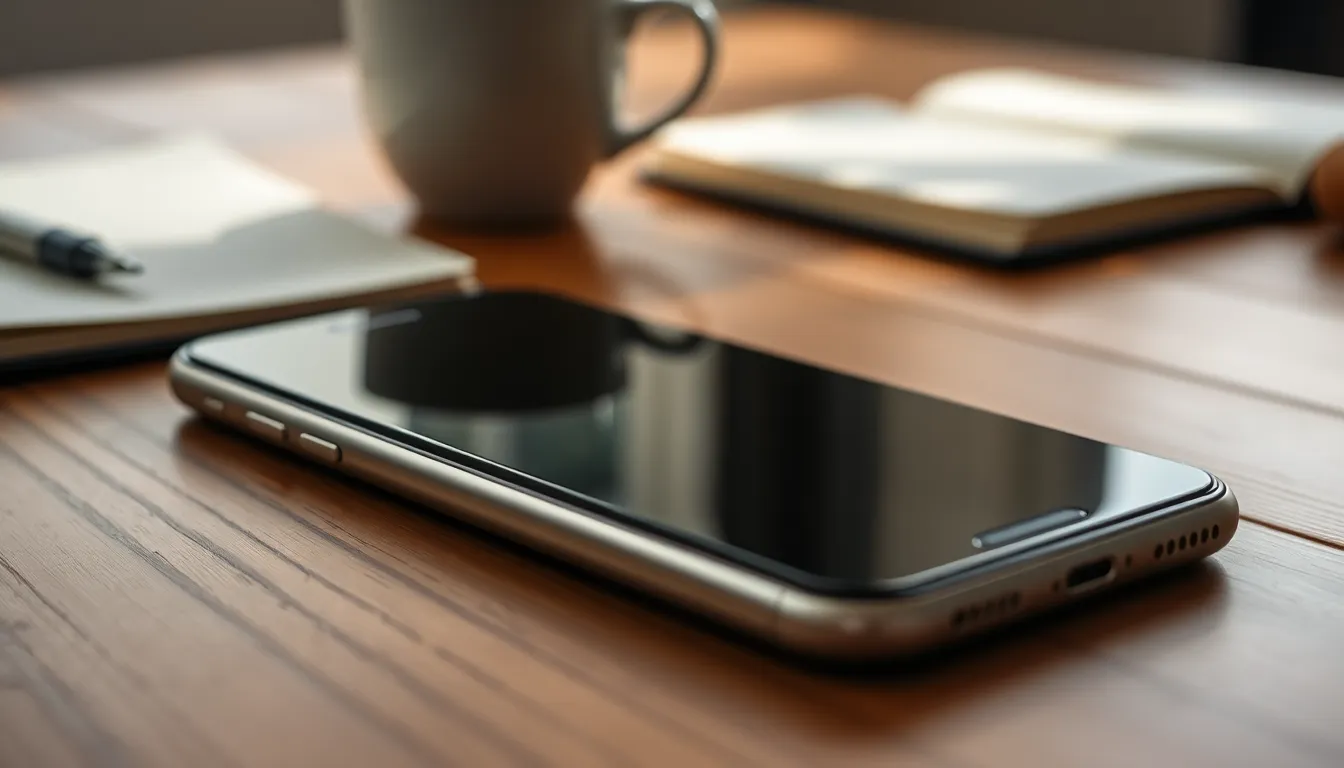Table of Contents
TogglePicture this: you’re enjoying a blissful day without your iPhone, savoring life’s little moments. But then, a nagging thought creeps in—what if your phone’s off and your friends are bombarding you with texts? Will those messages just vanish into the digital abyss?
Understanding iPhone Functionality
Text messages play a vital role in communication. Users wonder about receiving messages when their iPhone is off.
How iPhones Handle Text Messages
iPhones store incoming text messages on their servers. When the device is turned off, messages still get sent. They will queue up on the server until the phone powers back on. Users can access all missed texts once their device is operational again. iPhone users receive notifications immediately after the device resumes. Messages stay preserved without being lost, thanks to this efficient system.
The Role of Cellular Network
Cellular networks facilitate message delivery. When an iPhone turns off, the network identifies the inactive status. It holds received messages temporarily in standby. Messages rely on this network when the device is off, and they get delivered according to network protocols. Despite the phone’s power status, the network processes messages seamlessly for users. No interruption occurs in communication thanks to this reliable network infrastructure.
Scenario Analysis

Understanding how an iPhone interacts with messages when not powered on or in airplane mode provides clarity about communication.
What Happens When Your iPhone Is Off
When an iPhone is off, it cannot receive messages in real-time. However, any text messages sent to the device while it’s powered down are stored on the cellular network. These messages queue up for delivery once the phone is turned back on. Notifications of received messages appear immediately after the device activates. Users can then view all missed messages, ensuring no communication goes unrecorded.
What Happens When Your iPhone Is in Airplane Mode
Using airplane mode disables all wireless connections, including cellular service. In this state, the iPhone does not receive messages until the mode is switched off. Similar to being powered down, incoming texts are stored on the network. Once the user disables airplane mode, the device retrieves the pending messages, allowing access to all communications sent during that time. Messages appear instantly after reconnecting to the network.
Alternative Messaging Options
Exploring alternatives for messaging provides additional ways to stay connected, even with your iPhone off. Understanding different options ensures uninterrupted communication.
iMessage vs. SMS
iMessage operates over Wi-Fi or cellular data while SMS relies on mobile networks. Users benefit from rich features in iMessage, like read receipts and media sharing. SMS, however, sends texts without internet access, making it universally compatible. Messages sent via iMessage queue when the iPhone is off, ensuring they arrive promptly post-activation. With SMS, the same applies; messages sent during downtime are held on the carrier’s network. Both methods ensure users retrieve their messages once their device is back online.
Third-Party Messaging Apps
Third-party messaging apps, such as WhatsApp, Facebook Messenger, and Signal, offer versatile communication. These apps utilize internet connections and can function separately from the phone’s built-in messaging. When the iPhone powers down, messages sent via these platforms remain accessible once the device is turned back on. Notifications for these messages will activate immediately upon reactivation. Each app provides unique features, like secure messaging or group chat options, enhancing user experience. Staying connected remains effortless even when the iPhone is offline.
User Tips
To enhance messaging experiences, users can consider effective strategies for managing notifications and setting up forwarding options.
How to Manage Message Notifications
Users can adjust notification settings to ensure timely alerts. Access the Settings app, then navigate to Notifications. Choose Messages and select preferred alert styles. Enabling sounds and banners provides immediate feedback for incoming texts. Additionally, customizing options for specific contacts allows priority notifications. These adjustments prevent missed messages and enhance responsiveness.
Setting Up Message Forwarding
Setting up message forwarding ensures accessibility across devices. Begin by opening the Settings app, then select Messages. Tap on Text Message Forwarding, where a list of connected devices appears. Enable forwarding for designated devices, like iPads or Macs. This setup allows users to receive replies on multiple platforms. Ensuring continuity in communication can improve responsiveness, especially when the iPhone is off.
Turning off an iPhone doesn’t mean messages are lost. The cellular network holds incoming texts until the device is powered back on. Users can rest easy knowing that once their iPhone is operational again, all missed messages will be delivered promptly.
Additionally, features like iMessage and third-party apps ensure seamless communication even when the phone is off. By managing notification settings and utilizing message forwarding, users can enhance their messaging experience. Staying connected is effortless, allowing for uninterrupted communication no matter the situation.




